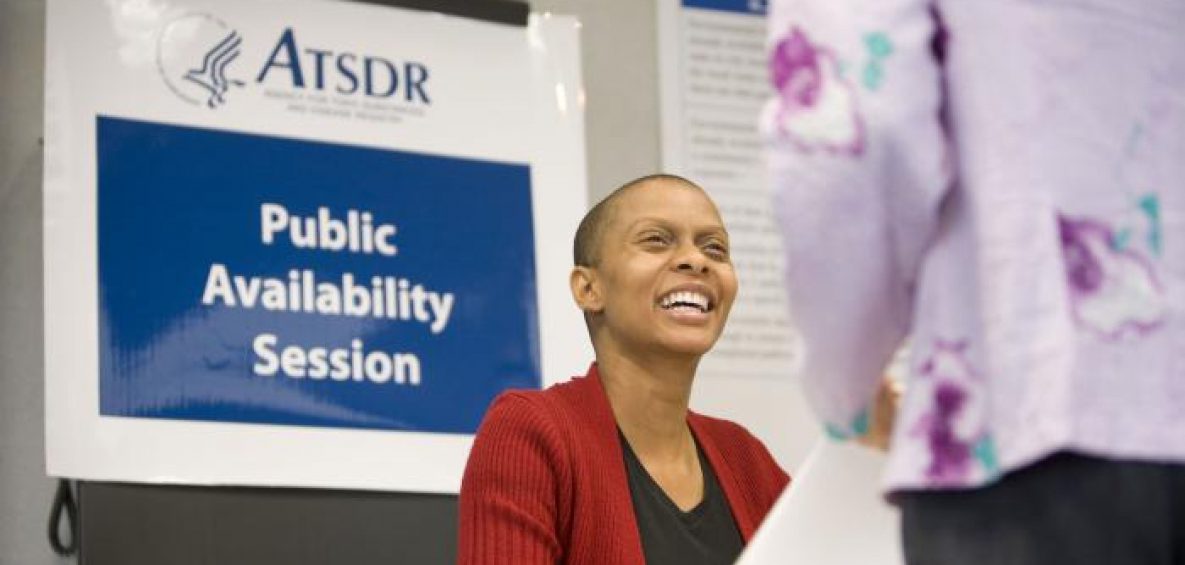Who We Are

ATSDR works in, with, and for communities to protect them from potential harmful health effects related to exposure to natural and man-made hazardous substances found in the environment.
The Agency for Toxic Substances and Disease Registry (ATSDR) serves as a science-based public health agency working to address community concerns about hazardous substances. For more than three decades, ATSDR has worked with communities across the United States to identify and reduce community exposures that might lead to harmful health effects. To date, we have taken action to keep people safe from environmental hazards in more than 6,000 communities.
ATSDR works in communities to assess human exposure to potentially harmful contaminants in the environment and their effect on health. We also provide expertise to educate and train communities so they can take action to protect their health.
ATSDR has a long history of working with environmental justice communities to address environmental concerns and upholds its commitment to environmental justice and health equity by listening, responding, and taking action alongside economically and socially marginalized communities to assess and address their environmental health concerns.
ATSDR develops tools that will help communities address environmental health inequities and incorporate health equity into public health assessment processes.
ATSDR guides health professionals on how to evaluate health equity during the public health assessment process.
ATSDR empowers communities to address environmental concerns and related health concerns in their area by offering the petition process and engaging and involving communities in the process.
ATSDR additionally partners with federal, state, and local governments to
- Identify environmental hazards
- Respond to environmental health emergencies
- Recommend actions to reduce environmental exposures and respond to questions about exposures
- Provide guidance to healthcare providers
- Conduct research on the health effects of hazardous substances in the environment and build capacity of state, tribal, and local health partners
In 2021, ATSDR completed its reorganization and created three new offices:
ATSDR’s Office of Community Health Hazard Assessment (OCHHA) conducts public health assessments, health consultations, and other related public health activities to determine the health implications of releases or threatened releases of toxic substances into the environment. OCHHA provides scientific expertise in environmental epidemiology and designs and conducts human health studies ⎯ including epidemiologic studies ⎯ to evaluate the association between exposure to hazardous substances and adverse health effects.
ATSDR’s Office of Capacity Development and Applied Prevention Science (OCDAPS) works with communities, partners, and professional organizations to build their capacity to address issues related to environmental contamination. OCDAPS supports this by translating science into educational materials, tools, and actions that can be used to prevent exposure to hazardous materials and protect health. OCDAPS also trains health professionals on how to address concerns and questions from their patients about environmental exposures.
ATSDR’s Office of Innovation and Analytics (OIA) collects, analyzes, and interprets data and provides scientific information to enable internal and external partners to make actionable decisions about exposure to hazardous substances. OIA provides analytical and modeling expertise, develops new analytical tools, and integrates the use of geospatial science in public health activities. OIA also interprets the complex science describing exposures, toxicology, and population dynamics, and creates tools to interpret public health effects associated with exposures.
ATSDR’s staff of expert scientists (in areas such as environmental health, epidemiology, toxicology, geospatial science, engineering, geology, health physics, and medicine), public health researchers, community engagement and health communication specialists, health educators, emergency responders, and others work tirelessly to prevent and address ongoing environmental exposures and unexpected disasters and to protect the public from related harmful health effects.
Headquartered in Atlanta, with 10 regional offices across the United States, ATSDR partners with local communities, taking a science-based, community-first approach to public health.
ATSDR is available 24/7 to respond to environmental health threats from natural disasters, chemical spills, and other emergencies.